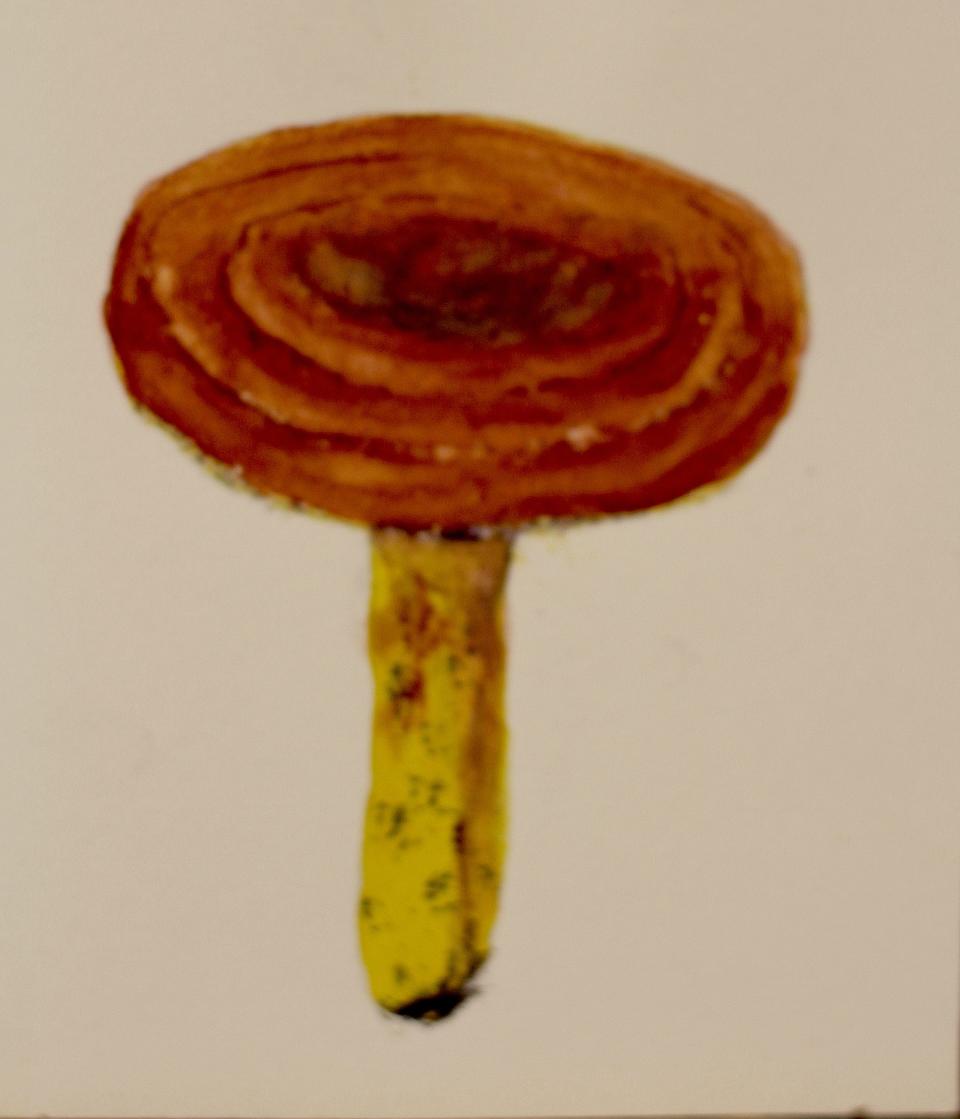Nature Journal: Mushrooms and toadstools - make sure you pick the right one
The cool and humid forests and valleys tucked away in the distinctive elevation zones of the Smokies region are sometimes said to be home to a greater variety of species than any other place on earth. Be that as it may, some mushrooms seem spectral and fantastic -- like something out of a dream world, best avoided. To others, they represent adventure, objects to be sought out, identified, and understood for their own intrinsic beauty and place in the ecological cycle. And then there are those who pursue them as delicacies, gourmet items that wind up on the kitchen table.
Way back in the late 1980s my wife, Elizabeth, and I took a Smoky Mountain Field School course conducted by Ron Peterson, then the mycologist at the University of Tennessee. This gave us the confidence and rudimentary skills required to make accurate identifications of easily located and identified species. There are about 20 species that we now harvest for the table, mainly in late summer and fall, which is the time of mushroom abundance in this region. These would include morels (a spring species), sparassis, sulphur shelf, hedgehog mushroom, chanterelles, the horn of plenty, painted Suillus, blue Lactarius, milkies, velvet foot, honey mushrooms, and oyster mushrooms.

We never fool with any species that are in a genus where poisonous species are found. Misidentifying a bird or a wildflower isn't a big deal, but misidentifying a mushroom that you're going to eat can be a really big deal - like death.
Let's take a closer look at some of the cultural aspects of mushroom harvesting and ingestion. When I was growing up in piedmont Virginia, my folks never made reference to mushrooms; instead, they invariably called them toadstools - a negative label that implied they were suspect and not to be fooled with anymore than true toads were to be handled because they supposedly gave you warts.
Nature Journal:: Cardinal flower has eye-catching color
More from Nature Journal: Stands of maidenhair fern are plant architecture
But all of the earliest European settlers in North America (including my ancestors) had come to this continent with a long-standing tradition of harvesting and ingesting mushrooms. And they immediately began harvesting and ingesting North American species that resembled the ones they had been fond of in the Old World. Trouble was that not a few of these proved to be deadly look-a-likes.
That situation pretty much cured most of our early ancestors from fooling with toadstools. On the west coast, this look-a-like scenario continues to be replayed into the 21st century as modern immigrants from Asia make deadly mistakes when they harvest and ingest species that closely resemble ones that had been chosen edibles in their homelands. Some of the eastern European immigrants, however, have continued to harvest and ingest North American species to this day with success based on close observation and care.
Interestingly from a cultural viewpoint is the fact that the Native American peoples of both North and South America brought with them to the New World a great tradition of harvesting and ingesting mushrooms which have been continued to this day. One supposes that they have done so by trial and error. That is, the Native Americans no doubt made deadly identification errors, as did the Europeans, but they apparently recorded those errors in their oral traditions and tended not to repeat them.
If you took a basketful of recently harvested mushrooms into a barbershop in Cherokee, a lively discussion as to their identification and where they were found would commence. The Cherokees would have their own names for each species and they would know exactly the type of habitat in which each was harvested.
"Armillariella mella" is known to the Cherokees as "slicks" and to whites as the "honey" mushroom. According to Cherokee native Amy Walker, an avid mushroom collector I spoke with some years ago, her people call them "slicks" because they "just slide right down your throat." This is true. Once the cap of a "slick" is heated a little, it becomes viscous, like an oyster, and slides right down, one after the other.
Walker noted that the Cherokees have also traditionally collected "milkys" (a species in the "Lactarius" genus, all of which give off a milky latex), "wishys" (apparently the species known to whites as "hen of the woods"), and several others.

George Ellison is an award-winning naturalist and writer. His wife, Elizabeth Ellison, is a painter and illustrator who has a gallery studio at 155 Main St., Bryson City. Contact them at info@georgeellison.com or info@elizabethellisongallery.com or write to 3880 Balltown Road, Bryson City, NC 28713.
This article originally appeared on Asheville Citizen Times: Nature Journal: Mushrooms and toadstools - pick the right one

